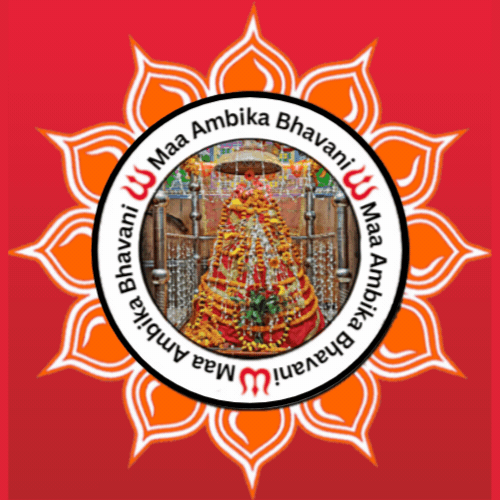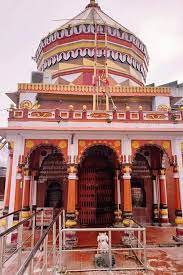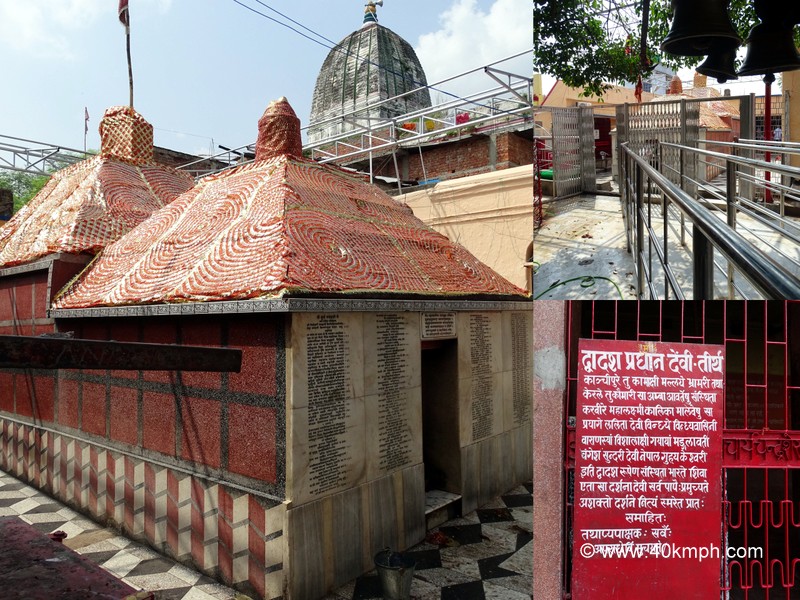
There are many famous temples in Patna, the capital of Bihar. In such a situation, today we will tell you about Mahavir Temple.This is the most famous temple of North India. A large crowd of devotees is seen in this temple especially on Tuesdays and Saturdays. The special thing about this temple is that there are two idols of Bajrangbali together. In this temple, Naivedyam laddu is offered to Bajrangbali. This laddu is very tasty. There is a belief regarding this Prasad that by eating this laddu, people can be saved from many serious diseases. According to mythological belief, all the wishes of the devotees are fulfilled by seeing Bajrangbali.
On the occasion of Ram Navami, the grandeur of this temple is worth seeing. A large number of people come here from far and wide. On this special occasion, a procession of Lord Shri Ram, Sita, Lakshman and Hanuman ji is taken out in Mahavir temple. There is also a huge statue of Bholenath in this temple.

One of the 52 legendary Shakti Peethas is located at Mithila (near Janakpur station) Darbhanga on the border of Bihar, India- Nepal. The holy place is dedicated to divine powers “Goddess Durga” are worshipped by a large number of Hindu devotees as “Mahadevi or Uma”. It is believed that Devi Sati’s left shoulder (Vama Skandha) fell here. The idols of goddess Uma Devi and Lord Mahodar are located in a temple on a mountain rock.The temple which represents a fort is a white colour structure having four minar type towers. There is also a colour fountain in front of the temple which is one of the tourist attractions.
According to the Hindu mythology, it is whispered that Devi Sati’s “Left Shoulder”fell here. The main idols of this legendary divine place are Devi as “Mahadevi or Uma” and Lord Shiva as “Mahodar” (a brave one). The holy place is dedicated to Goddess Durga. The place is known for the other histories present in the great holy epic Ramayana of Hindus. Since Janakpuri is known as the birth place of Sita Mata (Wife of lord Rama) and her father, the famous king of Janak used to rule this region. The people have a wrong conception of believing the Janki madir as the popular Shakti peeth. An ancient Shakti temple at this place is also known as Sona mai mandir. Mithilachal is also known as Durgasthan or the place for Devi Bhagavati.
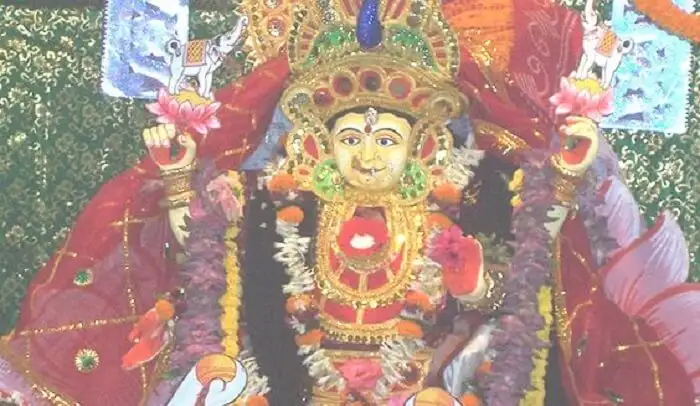
If you are in the holy city of Gaya, you simply cannot miss one of the most iconic temples in Bihar. Mangala Gauri Temple is one of the 18 Shakti Peethas in India. With mentions in holy books like Padma Purana, Vayu Purana, Agni Purana, this holy shrine is dedicated to Sati. It is believed that a part of the body of Sati fell here and this place is worshipped in the form of breasts. It is worshipped This small The history of the temple dates back to many sanctuaries. The architecture and grandeur of the temple is something which will surely fascinate you.

Baba Hariharnath Shivling is the only such pagoda in the world, in which half of the figure is of Shiva (Har) and the rest is the figure of Vishnu (Hari), both the gods sitting together in the same sanctum are called Harihar. It is believed that it was established by Brahma himself to bring the Shaiva and Vaishnava sects closer to each other.
The legend of Gaj-Grah is also proof. There is also a fact that after a long struggle at this place, there was a cease-fire between Shaivites and Vaishnavites at this place. According to the legend, Shri Ramchandra, while going to Janakpur with Guru Vishwamitra, stayed here and established Hari and Har. His footprints are present in Ramchaura, Hajipur. In this area, people of Shaivite, Vaishnava and Shakta sect together take bath and Jalabhishek of Kartik Purnima. Before 1757, the temple was made of timber and black stone blocks.

Mahakali is considered to be the prime Goddess for sadhana. This form of the Devi is dark-skinned with disheveled hair with a garland of severed human heads. She holds a severed human head and a kharga (a large machete) in her left hands and a barmudra and in her right hand.
She is having a half-moon on her forehead. Mahakali's major forms are Dakshinakali, Gujyakali, Bhadrakali, Sashankali and Mahakalbhairavi. Dakshinakali is adhisthatri devi who governs the planet Shani. So she is worshipped on Saturday. The temple to Mahakali is situated in east of Kamakhya.
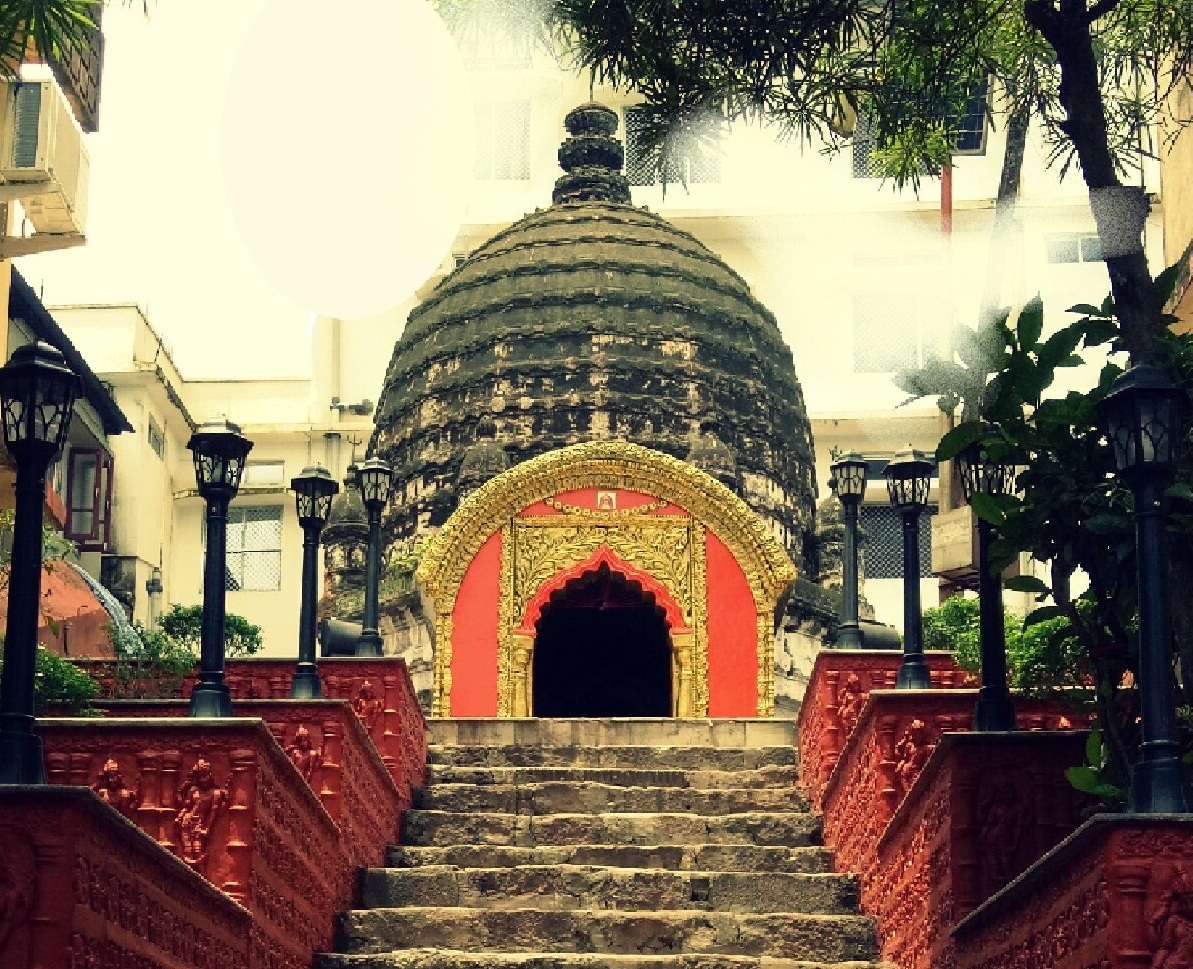
Tara Devi gives ‘Bak-shakti’ i.e power of speech. She is also 'Nil Saraswati'. Devi is fair-skinned, three eyes and four hands. She holds a Kharga, a Kartarika, a severed human head and a water lily. She wears a garland of human heads and wears a Tiger Skin. Tara Devi is shown standing on a pyre. According to Maya Tantra, Tara Devi has eight forms: Tara, Urga, Mohagra, Bajra, Nila, Saraswati, Kameshwari and Bhadrakali. When prayed she comes to the aid of people in trouble and so known as 'Tara'.
As Nil Saraswati, She grants power of speech. As Ugratara, She protects people from deep fear. Sage Basistha placed Tara Devi near Jorpukhuri of present Guwahati-the famous mandir is known a ‘Ugratara Mandir’. The Tara mandir in Nilachal Parvat lies between Mahakali and Kamakhya temple. Tara is the adhisthatri devi of Guru Brihaspati (Thursday) and is considered Devi who guides and protects and offers the ultimate knowledge that leads to salvation.
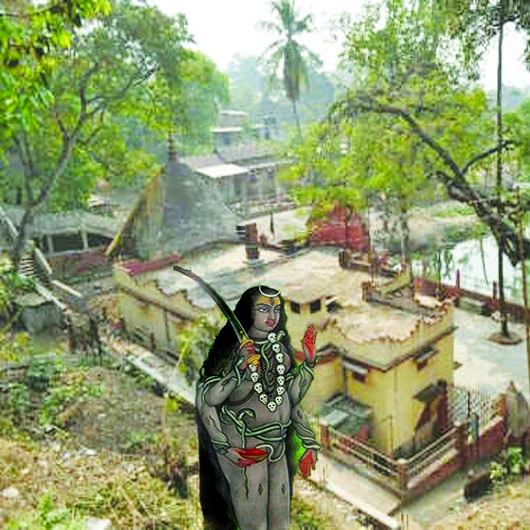
The colour of Devi's skin is like that of the mid-morning sun. She is clad in a red vastra (garment). In her four hands she takes a Borda (large machete), a Pushtak (book) and Japmala (prayer beads) and fourth hand is in Abhaymudra gesture. She also has a garland of human heads, her eyes are as bright as a red lotus. Devi Bhairavi has 13 different forms:
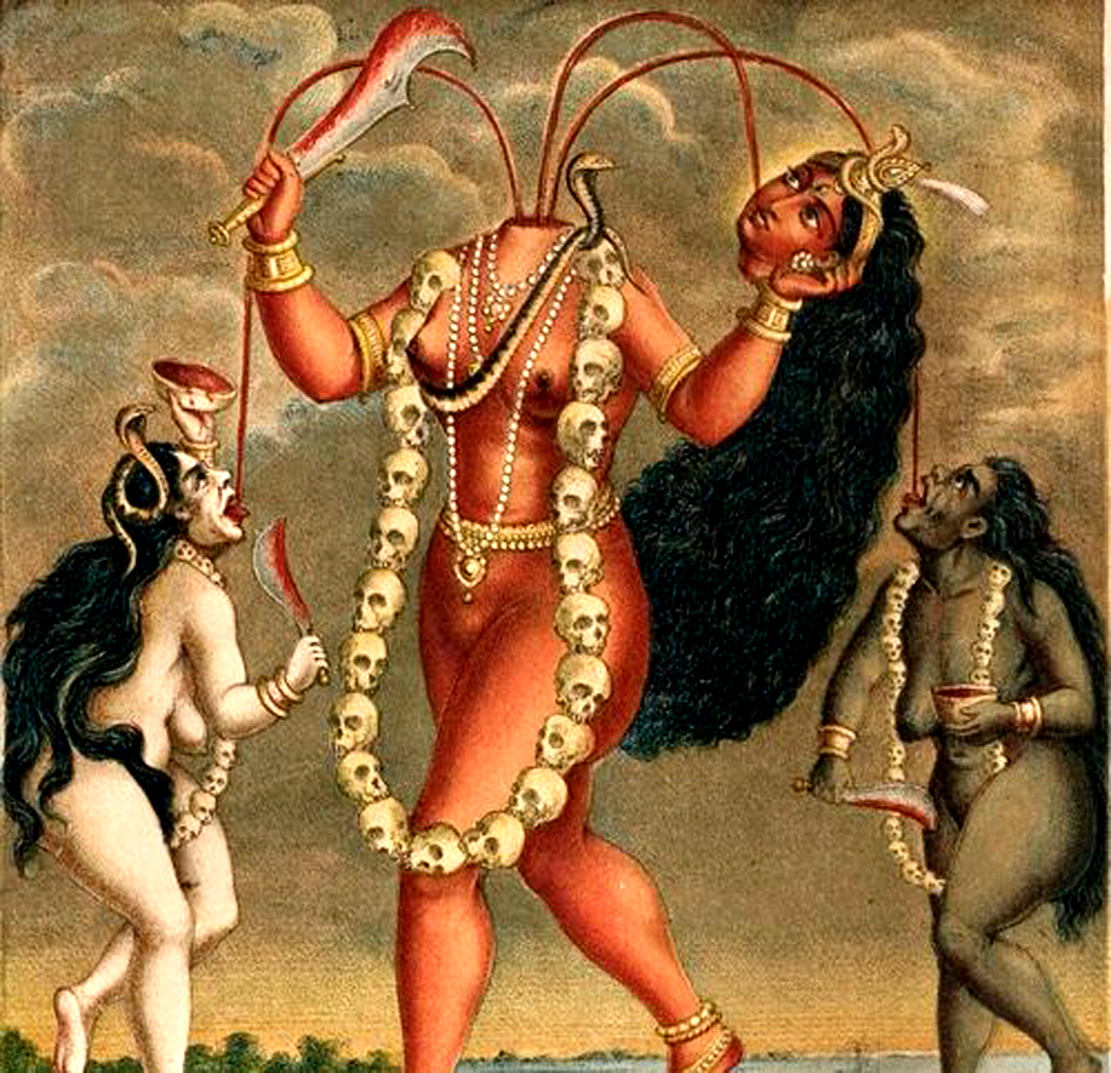
Chhinnamasta Devi is headless and is in a fearsome look. Her cutout head lies next to her. She is shown drinking the blood that sprouts out of Her neck. Her hair is not tied disciplined. She holds human heads and weapons in her hands. She too wears a garland of human heads and her left leg in a forward position. Moreover, devi is seem standing on Madan (Kam) and Rati who are locked in an embrace. Devi's main associates Bornini and Dakini are nearby and also and the blood that comes out like a fountain from Devi's neck. Chinnamasta Devi is the adhisthatri devi of Rahu (Wednesday). This temple of nilachal parvat adjoins the Kameshwar temple is only accessed through a steep and narrow flight of stairs that tests one's physical skills to reach.
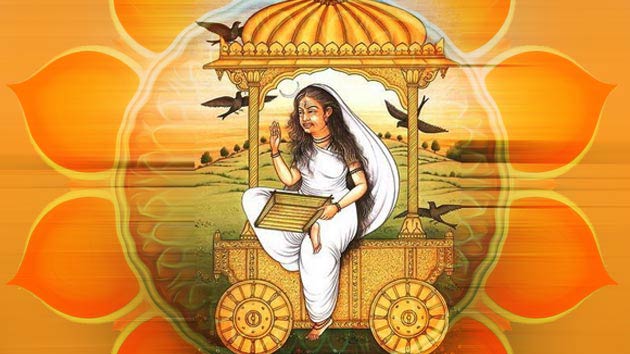
Colour of Devi is pale-skinned, tall, restless and wears dirty clothes. She is in the form of a widow. She has rukhya eyes and holds weapons in her three hands while the fourth is in a bormudra gesture. She has a large ugly nose and a fearsome look. Dhumawati devi is the adhisthatri devi of Ketu (Thursday). The colour of this widow devi is naturally white.
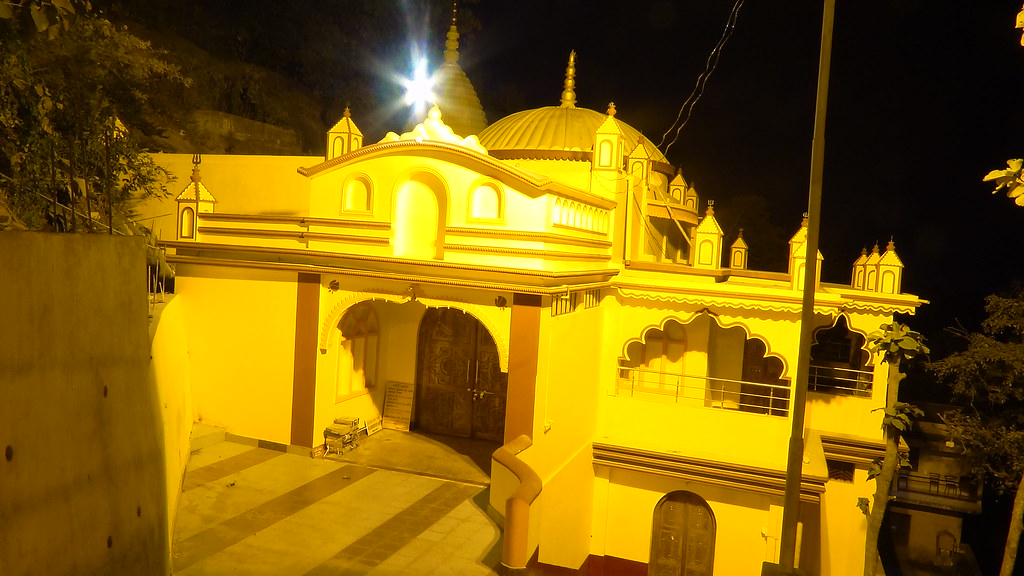
Mahakali is considered to be the prime Goddess for sadhana. This form of the Devi is dark-skinned with disheveled hair with a garland of severed human heads. She holds a severed human head and a kharga (a large machete) in her left hands and a barmudra and in her right hand.
She is having a half-moon on her forehead. Mahakali's major forms are Dakshinakali, Gujyakali, Bhadrakali, Sashankali and Mahakalbhairavi. Dakshinakali is adhisthatri devi who governs the planet Shani. So she is worshipped on Saturday. The temple to Mahakali is situated in east of Kamakhya.
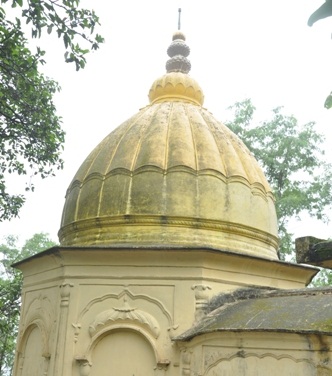
The colour of Bhubaneswari Devi's skin is like the rays of the sun at dawn.There is a half-moon on her forehead, has three eyes. Out of four hands,in two hands She holds a spear and a lasso while the other two hands are in the- Barmudra and Abhaymudra. Bhubaneshwari temple is situated at elevation 690feet, highest point of Nilachal Parvat. The Puranas say that Bhubaneshwari temple is at the top of the Brahma Parvat, so Nilachal Parvat is no other than Brahma Parvat. Devi is mother of universe whose Body is the Cosmos. Childless couples with marital problems will get boon from Devi who is adhisthatri devi of Shukra (Friday).
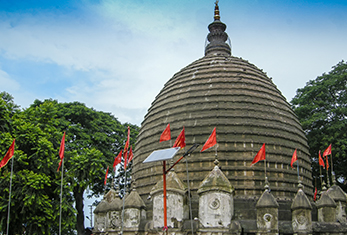
Matangi Devi is the `Tantric Saraswati' and the adhisthatri devi of Rabi (Sunday). She sits on a bejeweled throne, sports a white half-moon on her forehead. In her four hands She holds a kharga, khetak, lasso and spear. Apart from the natural naibaidya, She likes rice custard sweetened with sugar. Kamala Devi is the `Tantric Lakshmi' and the adhisthatri devi of the Moon (Monday). She wears a crown of jewels, is wraped in a red vastra. Godness is seated on a lotuses in two hands and other two are in the bormudra and abhaymudra gesture. Four white elephants around her are seen performing abhishek. The two devis Matangi and Kamala are seated in the garba griha of the main temple to the east of the Yoni Mudra Peeth.
SApart from these ten `Dasamahavidya' temples in Nilachal Parbat, there are five temples dedicated to Maheshwar (Shiva). They are Siddheshwar, Kameshwar, Kotilinga, Amra Tokreshwar and Kedareshwar. Of these Shiva temples, the Kotiling and Siddheshwar can be reached after short treks downhill while Kameshwar is within the main Kamakhya temple complex. Tokreshwar temple is connected with a motorable road and is situated just beside the Brahmaputra river. Kedareshwar is adjacent to the Kamakhya temple complex. The other temples in Nilachal Parbat are the Jai Durga, Bana Durga, Namath Kali, Hanuman, Ganesh, Pandunath, Gadadhar and Sitala temples. The kundas or ponds in Nilachal Parvat are: Saubhagya kunda, Wrin Mochan kunda, Amrit kunda, Durga kunda, Gaya kunda and Kaso Pukhuri. It is said that a round of all the temples in Nilachal Parbat on foot an arduow task that would take a couple of days is sure to help achive complete salvation.
She is the main form of Maa Kamakhya and ensures the well-being of all living creatures. Devi is as bright as the new sun. She holds a bow, arrow, rope and lasso in her four hands. She is seated in Mahakal's lap and is in a happy and satiated state of mind.
